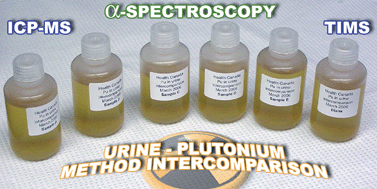Following a radiological or nuclear emergency, medical intervention requires rapid assessment of the exposure of people usually through determination of internal dose. For the plutonium urine bioassay, besides thermal ionization mass spectrometry (TIMS) and alpha spectrometry methods, inductively coupled plasma mass spectrometry (ICP-MS) methods have been recently developed, which can provide much higher sample throughput. In this work, three ICP-MS methods were compared with one TIMS method and two alpha spectrometry methods for the measurement of 239Pu and 240Pu in human urine samples spiked at different concentration levels. The sample throughputs for all three ICP-MS methods are similar: each instrument measures about 80 samples in the first 24 hours and 200 samples in the first 48 hours following the emergency event, if the samples arrive at the laboratory 8 hours after the event occurs. Method accuracy and precision were determined using ANSI N13.30. Method detection limits and minimum detectable amounts (MDA) were determined to evaluate method sensitivities. The sensitivities of the three ICP-MS methods were also compared with the derived urine action level (24 h urine, 500 mSv committed effective dose equivalent, inhalation exposure, maximum dose conversion factor) to evaluate their applicability to exposure situations.

You have access to this article
 Please wait while we load your content...
Something went wrong. Try again?
Please wait while we load your content...
Something went wrong. Try again?


 Please wait while we load your content...
Please wait while we load your content...